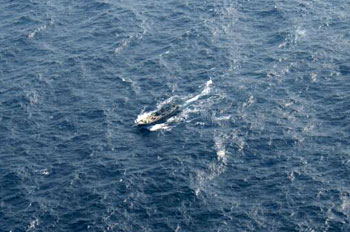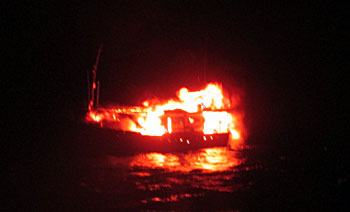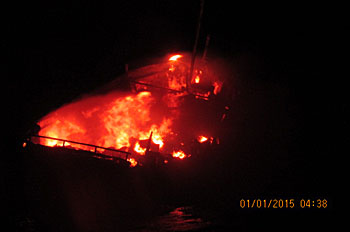INDIAN ARMED FORCES CHIEFS ON
OUR RELENTLESS AND FOCUSED PUBLISHING EFFORTS

SP Guide Publications puts forth a well compiled articulation of issues, pursuits and accomplishments of the Indian Army, over the years

I am confident that SP Guide Publications would continue to inform, inspire and influence.

My compliments to SP Guide Publications for informative and credible reportage on contemporary aerospace issues over the past six decades.
Need to Revamp Coastal Security
This episode has uncanny similarity with the one on November 26, 2008, sponsored by the Inter Services Intelligence (ISI) of Pakistan.
 |
By Air Marshal B.K. Pandey (Retd) Former Air Officer Commanding-in-Chief of Training Command, IAF |
As the New Year dawned, the nation was greeted with the news that a 26/11 type of attack by terrorists once again using the sea route on the Western seaboard, had been averted during the night by the Indian Coast Guard (ICG).



Apparently, the National Technical Research Organisation (NTRO), a recently created intelligence agency of the central government responsible for technical intelligence, for a period of 15 days, had been monitoring mobile phone conversation amongst different agencies in Pakistan that were indicative of plans to launch a boat from Keti Bunder, a small port near Karachi on its Southern coast, on a clandestine mission suspected to be somewhere along the Indian coastline. After the boat set sail, while continuing to monitor cell phone traffic, the NTRO alerted the ICG that immediately launched their Dornier 228 maritime surveillance aircraft to locate and track the boat which it did. The ICG had also diverted a patrol vessel to intercept the boat. In a coordinated search and based on inputs from the Dornier aircraft, at around midnight of December 31, 2014, the ICG patrol vessel intercepted a powered boat some 365 km West-South West off Porbandar on the coast of Gujarat. The boat was about eight km on the Indian side of the maritime boundary with Pakistan.
Illuminating the boat by powerful searchlights, the crew of the ICG patrol vessel spotted four men on deck. As per reports from the ICG, the boat increased speed and tried to get away from the Indian side of maritime boundary and the hot pursuit continued for nearly an hour. The boat did eventually stop after warning shots were fired but the four-man crew disappeared below deck and probably set the boat on fire which triggered a massive explosion blowing the boat to smithereens. No bodies or parts of the wrecked boat have yet been recovered.
This episode has uncanny similarity with the one on November 26, 2008, sponsored by the Inter Services Intelligence (ISI) of Pakistan. On this fateful day, a band of ten terrorists from Karachi came sailing across the Arabian Sea to launch their attack on Mumbai and held the financial capital of India hostage for 60 hours and left 166 people dead. This time too, the Pakistani boat followed the same route and whether the four men in the ill fated boat were to tasked repeat 26/11 in Mumbai or cause mayhem in any other coastal city or were merely on a mission to deliver bombs, explosives and automatic weapons to their comrades in India, would have to be established through further investigation and intelligence operations. But the fact that the occupants of the boat were in constant communication with the maritime security agency of Pakistan is proof enough that this was an operation sponsored by the government of our hostile neighbour. One possibility is that the mission was to launch an attack on Porbandar during the inauguration of a major base of the Indian Navy scheduled for January 12 or to embarrass the government by disrupting the "Pravasi Bharatiya Divas" celebrations commencing January 07 where there would be a congregation of a large number of Indians from the affluent business community living from abroad.
What is of particular significance is that this mission was launched by the ISI at a time when there is heavy shelling going on across not only the Line of Control but also across the international border with Pakistan. The mission of the explosive-laden boat in the Arabian Sea could thus be a part of a larger game plan. But what is most intriguing is that despite accurate, reliable and actionable intelligence being available, there was no action taken by the Indian Navy. Hopefully, the government will address this issue to further strengthen coastal security.
India has a coastline of over 7500 km, the ninth largest in the world which spreads across nine states and four Union Territories. Among the coastal states, Gujarat has the largest coastline of over 1200 km. Providing foolproof security for such a large coastline that is under the control of different state governments and administered by different political parties, has been proving to be a formidable task. Although in this latest episode, a terrorist attack has possibly been foiled through well coordinated action between the intelligence agencies and the ICG, it is a grim reminder that the threat to national security from across the vast coastline is real. The lessons learnt after the 26/11 attack reinforced by those in this latest episode, need to be implemented with seriousness and without further delay.





